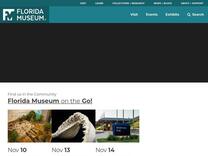Graduates – The Kawahara Lab https://www.floridamuseum.ufl.edu/kawahara-lab/personnel/graduates/
Christian Couch, M.S. Graduated Summer 2024 Email: christian.couch@ufl.edu I am an M.S. biotechnology student in the college of Agricultural and Life Sciences. I work on many molecular projects relating to conservation, biodiversity and phylogenetics within Lepidoptera. I am also interested i
Japan Madagascar Malaysia Mozambique North & Central Florida Peru Taiwan Washington

